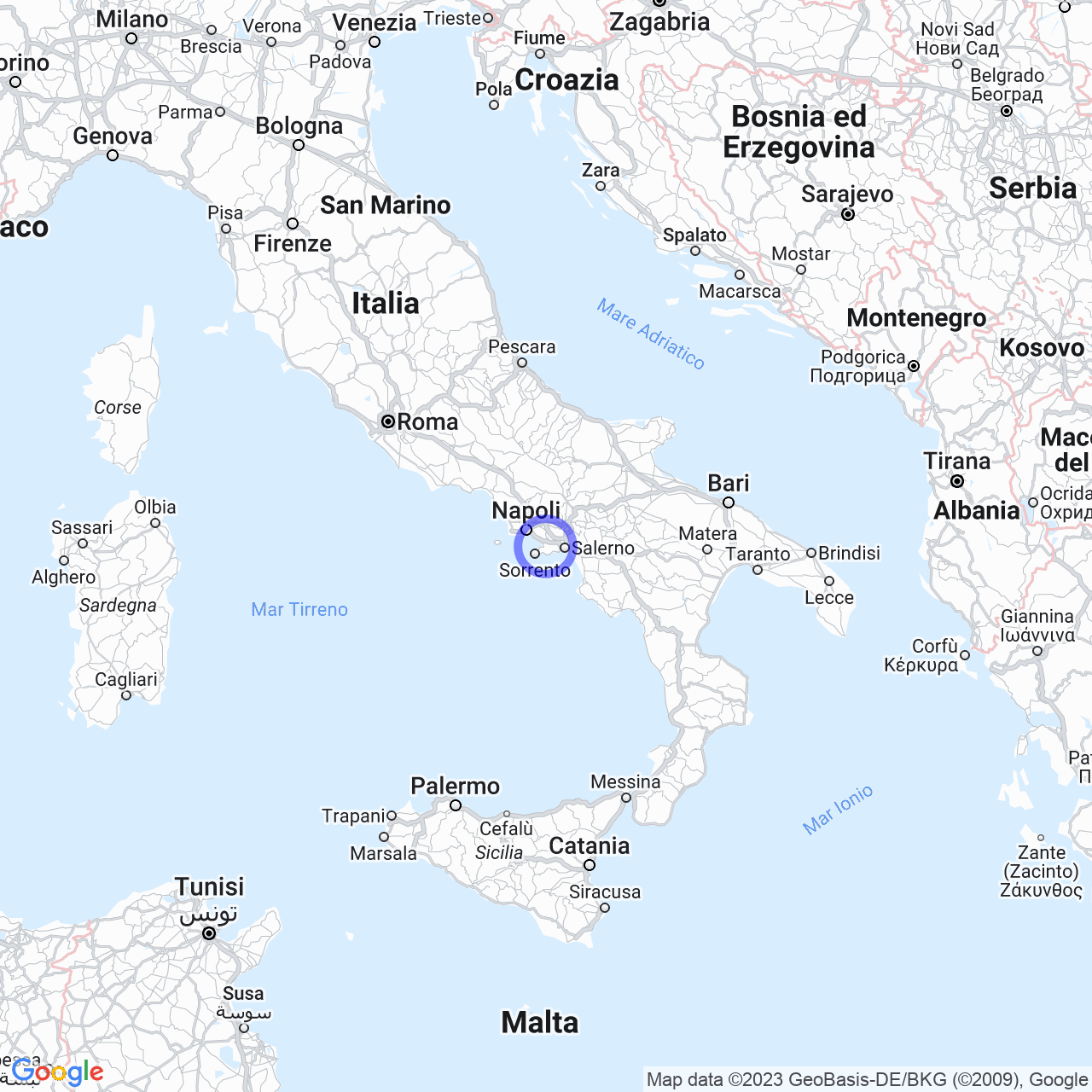Gragnano
Welcome to Gragnano, the City of Pasta
Are you ready to discover the city of pasta? Welcome to Gragnano, a town in Campania with a population of approximately 28,000 situated at the foot of the Lattari Mountains. Gragnano is primarily known for its production of pasta, so much so that it produces and exports the largest amount of pasta in Italy and is known throughout Europe as the City of Pasta. In 2013, Gragnano pasta received recognition from the European Union as a Protected Geographical Indication, a sign of quality and protection.
Physical Geography: Between Mountains and Sea
Gragnano is located in the southern part of the province of Naples and stretches along the Amalfi Coast. The city is almost entirely surrounded by mountains: Monte Muto, Monte Sant'Erasmo, Colle di Carpeneto, and Monte Pendolo. The mountains jut out towards the sea, creating a breathtaking landscape of steep cliffs and hidden coves. The territory covers an area of approximately 13 km², and its soils are fertile and suitable for cultivating olives, citrus fruits, and vegetables.

History: From Roman Origins to the Normans
Gragnano's origins date back to the 1st century BC when it was inhabited by the Osco people. In 89 BC, the Roman consul Lucio Cornelio Silla built a fortification in Gragnano's territory to quell the Stabiae revolt. The rebels took refuge there, giving rise to an urban center called "granianum." During the Roman era, the population was engaged in agriculture and hunting and livestock activities. The city was destroyed by the eruption of Mount Vesuvius in 79 AD, but even after the disaster, Gragnano continued to be inhabited and was a destination for immigrants. In the 5th century AD, the town had to rely on fortifications to defend itself against barbarian invasions. In the 10th century, the territory was peacefully annexed to the Maritime Republic of Amalfi. In 1131, Gragnano fell into the hands of the Normans, and during the reign of Guglielmo II of Sicily, it was a period of prosperity for the city.
Food and Pasta Culture
But let's talk about Gragnano's specialty: pasta. Here, pasta production is an art that is passed down from generation to generation. The climate, the presence of water sources, and centuries of experience have made Gragnano pasta acquire a unique flavor. The city still retains the tradition of producing pasta with bronze machinery. "Bronze" pasta has a greater porosity, which makes it perfect for retaining sauces and ensuring even cooking. In the town, you can visit the Pasta Museum, where you can discover the history and techniques of pasta production. Gragnano pasta is especially appreciated for the preparation of macaroni with ragù, one of the highlights of Neapolitan cuisine.
Beaches and Attractions
But Gragnano is not just pasta, it's also landscape and culture. Among the city's most famous beaches, we mention Santa Croce, San Marco, and the Castello Beach. The latter is located at the foot of the eponymous castle and overlooks the Gulf of Naples. The city also hosts the Regional Park of Monti Lattari, a natural paradise perfect for excursions and trekking. Among the city's attractions, we mention the Church of San Giovanni Battista, the Church of the Most Holy Rosary, and the Ducal Palace, one of the symbols of the city.
Conclusion
If you love pasta and culture, Gragnano is the city for you. Here you can discover the century-old history of pasta, taste traditional cuisine dishes, and enjoy the enchanting landscapes of Campania. Come and visit Gragnano, the City of Pasta awaits you!
